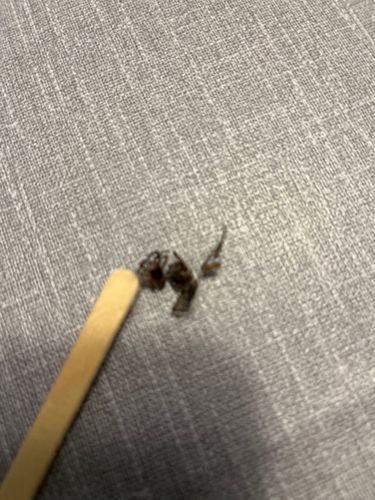Jumping Spider
Scientific Name: Salticidae (family, as specific genus/species is hard to determine from the image)
Order & Family: Order: Araneae, Family: Salticidae
Size: Typically 1 mm to 25 mm (0.04 to 1 inch) in body length, depending on the species.

Natural Habitat
Widely distributed and can be found in a variety of habitats, including gardens, forests, meadows, and often in and around human dwellings (walls, windows, furniture).
Diet & Feeding
Mainly small insects and other invertebrates. They are predators.
Behavior Patterns
Jumping spiders are active hunters, relying on their excellent vision to stalk and pounce on prey. They do not build webs for catching food but rather for shelter, egg sacs, or as draglines. They are known for their sudden, precise jumps, which can be many times their body length. Many species exhibit elaborate courtship dances.
Risks & Benefits
Generally beneficial as they prey on common household and garden pests like flies, mosquitoes, and small beetles. They are not considered dangerous to humans; their bites are rare, typically only occurring if provoked, and cause only mild, localized pain, similar to a bee sting, with no serious medical implications for most people.
Identified on: 8/11/2025